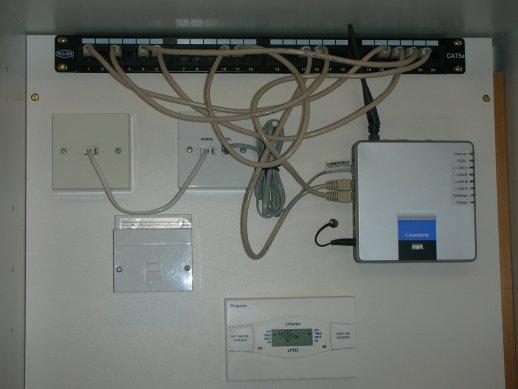Hi,
I'm looking to wire up my house with ethernet and have a 12-port patch panel in the cupboard under the stairs. I understand how the patch panel works but every patch panel that I've seen seems to be designed to fit into a rack of some sort.
This seems a little overkill for a 12-port patch panel - or is it? Can someone perhaps post a picture of a home installation of a patch panel so I can get some ideas of how these things can be mounted? Can you fashion an enclosure of your own and does the patch panel need to be facing forward (i.e. sticking out) or could it perhaps be mounted facing downwards?
I'm just trying to get some ideas for how these things can be installed - I've never seen an installation in the flesh and it's a little difficult to picture what it may end up looking like.
Many thanks.
I'm looking to wire up my house with ethernet and have a 12-port patch panel in the cupboard under the stairs. I understand how the patch panel works but every patch panel that I've seen seems to be designed to fit into a rack of some sort.
This seems a little overkill for a 12-port patch panel - or is it? Can someone perhaps post a picture of a home installation of a patch panel so I can get some ideas of how these things can be mounted? Can you fashion an enclosure of your own and does the patch panel need to be facing forward (i.e. sticking out) or could it perhaps be mounted facing downwards?
I'm just trying to get some ideas for how these things can be installed - I've never seen an installation in the flesh and it's a little difficult to picture what it may end up looking like.
Many thanks.



